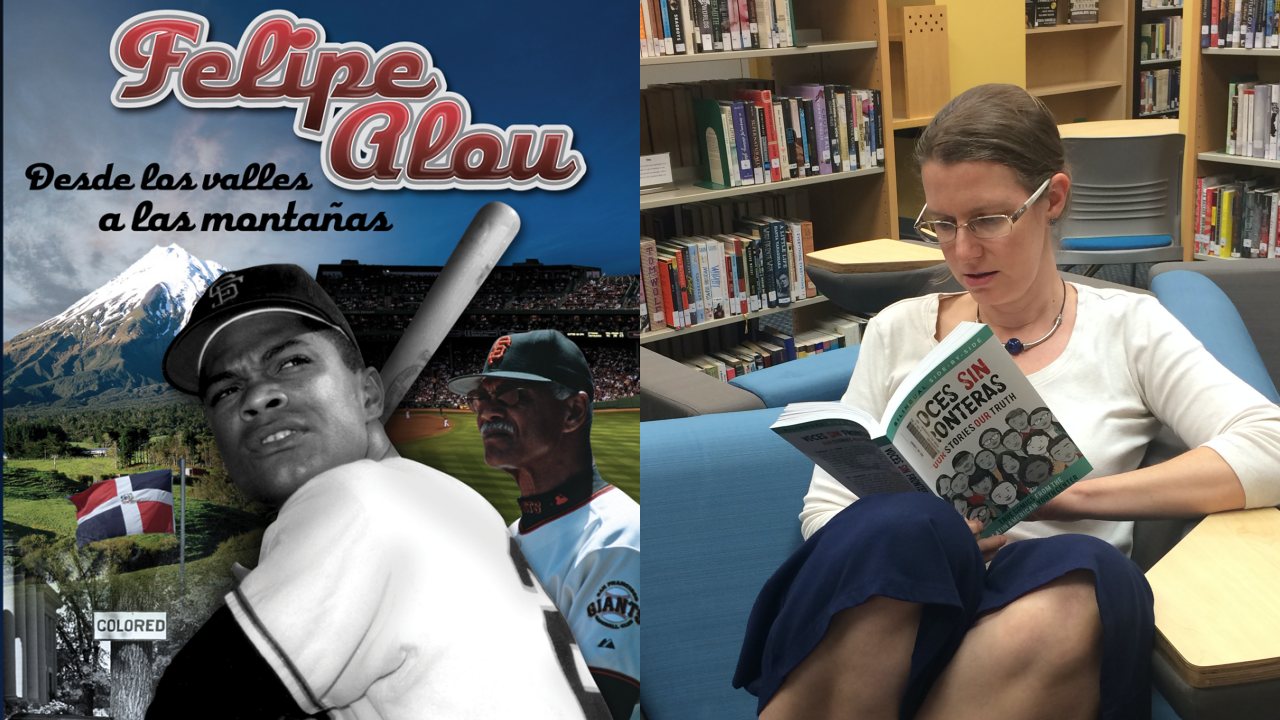In my relatively brief time at GDS, I’ve been examining two questions relative to my personal and professional growth and Spanish instruction:
- How does my teaching reflect the currently accepted theory of second language acquisition?
- What steps am I taking to address the diverse needs of my students and, in particular, my students of color?
It is with deep gratitude for the administration’s support that I share some recent encouraging evidence.
Renowned expert and theorist Stephen Krashen affirms that the evidence is clear; second language acquisition occurs through an abundance of input that is simultaneously comprehensible, compelling, and rich with examples of the grammar that the learner needs in their given stage of development. So, while I have always known that acquiring language is directly tied to contact hours and personal interest, my quest to find heaps of comprehensible, grammatically rich, novice-level input that compels a wide range of adolescent minds to keep learning in an environment where students’ contact hours are limited and a myriad of things are competing for their attention, has been…well, let’s just say…not easy!
In all seriousness, though, as I seek to engage all of my students, I am constantly thinking about my students of color who need to see themselves reflected in what they’re learning. Current scholars Uju Anya and L.J. Randolph Jr. remind us, “Language educators and learners cannot leave racial differences and the social impact of these identities outside the classroom.” Since I am not a native Spanish speaker, and since my personal language learning experiences are not detached from my white privilege, the responsibility rests with me to introduce those voices–native Spanish speakers, including those who self-identify with indigenous and/or African roots–into the curriculum.
As it turns out, one recent attempt proved especially promising, sparking the students’ desire to learn more. After our reading of Carol Gaab’s story, Felipe Alou: Desde los valles a las montañas, which chronicles the life of Dominican baseball legend Felipe Alou, the students’ reflections provided a window into the book’s reception. Some were “pulled in” by Alou’s resilience as an immigrant of color arriving in the South during the era of Jim Crow. Several students connected with the text on a personal level, noting similarities between Alou’s experiences and those endured by their own relatives, either as an immigrant and/or as a person of color living in the United States. Still other students were motivated by a “relatively easy and accessible,” text which, in turn, boosted their successful inference of the meanings of newer, unfamiliar words, while also enabling them to attend to higher-order thinking tasks such as textual analysis. Whatever their reason(s), this comprehensible, compelling, and rich text generated responses of, “I find myself excited and eager to keep reading,” it “makes me want to learn more,” it “helps me understand the importance of one’s identity,” and it “gives me the motivation to learn more of the language.”
This feedback pushes me to heed the call of scholars Anya and Randolph, “We must be intentional about finding and incorporating authentic resources that represent non-dominant target language and learner communities and cultural narratives…so that these voices may be amplified in our courses and, more importantly, so that our world and social realities can be more accurately and more completely represented.” Despite the fact that this reader is written for Spanish language learners–which some would argue deems this resource inauthentic–Gaab captures the genuine experiences and feelings, shared by Felipe Alou in her interviews with him. And with these truths, and the inspiring feedback from my students, my journey and search continue…
Works Cited:
Anya, Uju and L.J. Randolph, Jr. “Diversifying Language Educators and Learners.” The Language Educator, Oct./Nov. 2019, Volume 14, Issue 4, pp. 23-27.
Gaab, Carol. Felipe Alou: Desde los valles a las montañas. Chandler, Arizona: TPRS Publishing, Inc., 2012.
Krashen, Stephen D. “A Forty Years’ War.” Speak First – Read and Write Later, 8th Annual Indigenous Use the paper towelLanguage Institute 2017 Symposium, 23-25 October 2017, Buffalo Thunder Resort and Casino, Santa Fe, New Mexico.


